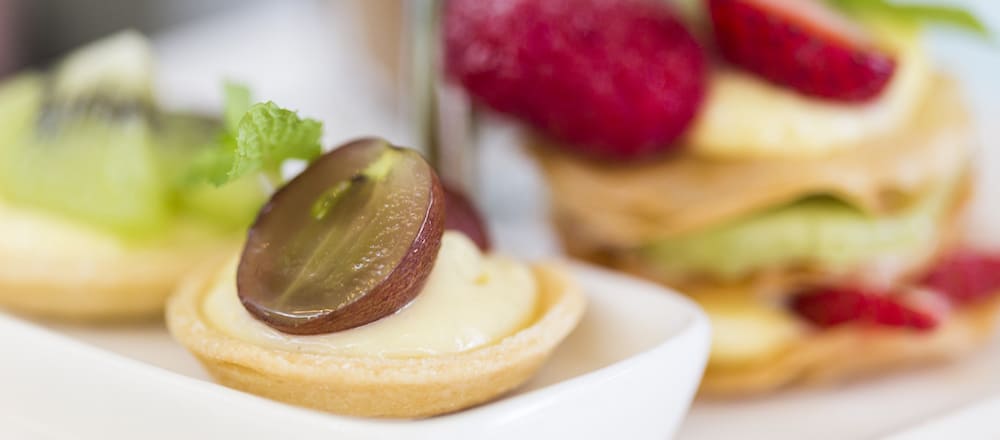What Is High Tea?

Have you ever dutifully scoured a menu and pondered the question “what is High Tea?”. Perhaps you’ve seen the term alongside “Afternoon Tea” and found yourself baffled by the differences between them? If so, we have good news. The Kent and Sussex Tea and Coffee Company are here to clear up your confusion once and for all!
In this article, we will explain the ins and outs and its significance. We will also look into the difference between this and Afternoon Tea. Finally, we will explore in depth the factors you’ll want to consider before having a ‘proper’ High Tea.

What is High Tea?
Enjoying a High Tea refers more to a social event than a specific type of Tea. It first became popular among the working classes of Britain during the 18th and 19th Centuries. While Afternoon Tea involved Duchesses, Baronesses and Ladies, High Tea catered to the needs of factory and mine workers coming home late in the evening. It was these social gathering that also played a part in the history of tea in the UK It was these social gathering that also played a part in the history of Tea in the UK.
It was an affordable choice during the Industrial Revolution. It was typically a family event that took place shortly after 5 pm. Unlike the upper classes, these families couldn’t indulge with ‘in-between’ meals like Afternoon Tea. Instead, it became the one and only evening meal. It often consisted of ‘heavier’ foods alongside a Cup of Loose Tea.

Difference Between High Tea and Afternoon Tea
Most know Afternoon Tea as a quintessentially English pastime associated with ornate Teacups, delectable finger sandwiches and scrumptious miniature cakes. It was the brainchild of Anna, the seventh Duchess of Bedford, in 1840.
The Duchess, who found herself hungry long before dinner, decided she needed something to whet her appetite at four o’clock in the afternoon. As a result, she requested a tray of Tea, bread with butter, and cake. Anna ended up enjoying it so much that it became a habit. Soon after, she started to invite others to join her, thus creating the social event we know and love today.
However, the craze never found its way to the working classes who ran to a different schedule and, indeed, a different budget. During this period, quality Tea was still considered expensive. Spending money on luxury goods like scones and Victoria sponges, meanwhile, was not realistic. The alternative was High Tea, which took hold in much of northern England and southern Scotland.
But why is it called “High Tea”? No one knows for sure. It could be because High Tea was (and still is) eaten at a table. The upper classes, meanwhile, had the choice of enjoying Afternoon Tea in low, comfortable chairs and sofas. Indeed, some people call Afternoon Tea “Low Tea”.
With Afternoon Tea, there is the expectation that one dresses and behaves ‘appropriately’. With ‘traditional’ being a predominantly family affair, there is no need to worry about etiquette or High Tea attire.

What’s On A High Tea Menu?
High Tea among the working classes was more than a frivolous pastime; it was a necessity. The upper classes had Afternoon Teas to avoid feeling peckish while simultaneously enjoying the company of friends. A High Tea, in comparison, needed to feed the family. For this reason, it involved foods usually associated with large meals – as well as, of course, Loose Leaf Tea.
This included:
- Meat Pies
- Fish Dishes such as pickled salmon.
- Baked Goods such as crumpets.
- Boiled Potatoes.
- Vegetables.
- Bread
- Crackers

Recommended Teas
High Tea has evolved in recent years. Indeed, since its creation in the 18th Century, it has become more of an umbrella term. If we’re talking about High Tea in the conventional sense, however, then we’re talking about family values.
For this, we recommend Pluckley Tea – our flagship Tea. We named it “Pluckley” after our home village, nestled within the stunning vistas of the Kentish countryside. It is a blend of Assam and Kenya Tea, one that has a close association with the Smith family – the owners of our company.
Alternatively, you could try, English Breakfast Tea, Earl Grey or Decaf Tea. Whatever you choose, you’ve chosen well with us. We pack every Leaf Tea, Tisane and Coffee fresh to order. This ensures not only quality but also consistency.

 Loose Leaf Tea
Loose Leaf Tea Pyramids
Pyramids Tea Bags
Tea Bags Africa
Africa Assam
Assam Ceylon
Ceylon Chinese
Chinese Darjeeling
Darjeeling European
European Indian
Indian Japan
Japan Nepal
Nepal South East Asia
South East Asia Ayurveda Tea
Ayurveda Tea Black Tea
Black Tea Chai Tea
Chai Tea Flowering Tea
Flowering Tea Fruit Tisanes
Fruit Tisanes Green Tea
Green Tea Herbal Tea
Herbal Tea Matcha Tea
Matcha Tea Oolong Tea
Oolong Tea Organic Tea
Organic Tea Pu erh Tea
Pu erh Tea Rooibos Tea
Rooibos Tea White Tea
White Tea Asian Coffee
Asian Coffee Caribbean Coffee
Caribbean Coffee Central American Coffee
Central American Coffee South American Coffee
South American Coffee Coffee Blends
Coffee Blends Decaffeinated Coffee
Decaffeinated Coffee Espresso Coffee
Espresso Coffee Ethically Sourced Coffee
Ethically Sourced Coffee Flavoured Coffee
Flavoured Coffee Organic Coffee
Organic Coffee Single Origin Coffee
Single Origin Coffee Chocolate 1
Chocolate 1 Chocolate 2
Chocolate 2 Chocolate 3
Chocolate 3 Chocolate 4
Chocolate 4 Chocolate 5
Chocolate 5 Chocolate 6
Chocolate 6 Chocolate 7
Chocolate 7 Chocolate 8
Chocolate 8 Chocolate 9
Chocolate 9 Loose Tea Filters
Loose Tea Filters Tea Accessories
Tea Accessories Tea Bricks
Tea Bricks Tea Caddies
Tea Caddies Tea Caddy Spoons
Tea Caddy Spoons Tea Gift Ideas
Tea Gift Ideas Tea Infusers
Tea Infusers Tea Strainers
Tea Strainers